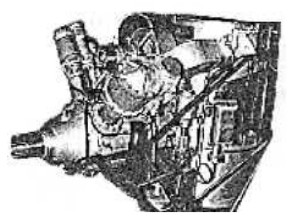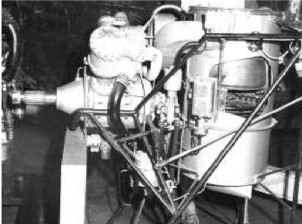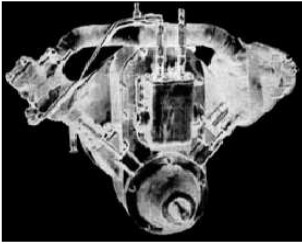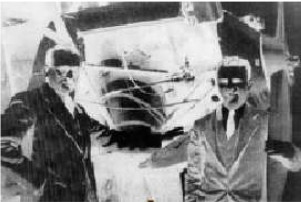Updated: 29-Jan-2020
In 1933, the Besler brothers from California successfully tested a steam engine that consisted of a high pressure boiler, two condensers and an alternative machine with two double-acting cylinders in V at 90°.

"Besler adapted for aircraft"
-It was installed in a Travel Air, replacing the usual Curtiss OX-5. No doubt there were many limitations.
-But perhaps the most amusing was the landing maneuver. While applying the brakes they could also reverse the engine, letting the plane stop immediately, and leaving everyone perplexed.

"Besler engine"
-More handicaps: the water reservoir, lack of oxygen to keep the flame up in the boiler at high altitudes, it weighs more than a combustion engine, etc.
-In the attached photograph we can see more details of the Besler steam aviation engine.
-It includes the boiler with a side section to distinguish some circular water heating tubes inside, like a railway steam engine system.
-All within a structure or bench of chrome-molybdenum steel tubes, the same material that is used for aircraft engine beds.

"Besler engine at the NASM"
-We obtained a new illustration of the engine that is known as the Double-Besler steam Engine.

“Double Besler” (PiP)
From appendix 7: The Besler engine that flew on a Travel Air 1933, was Bill Besler's design. See main text. It was the first plane that made a controlled and sustained flight with a steam engine.

"Steam escaping from the Besler engine" (PiP)
-Upon further investigation of aviation steam engines, in a magazine of the 1930's, we found out that the Besler engine is not the result of a single character (Bill) but of two brothers, as we can see in the following picture.

"The Besler brothers in front of their machine" (PiP)
-George Besler on the Left and on the right, holding the propeller, William (Bill) Besler.
-Below we show an image of the engine in a test bench. It is a poorly defined image, but sufficient to get an idea.

“Besler test bench”


